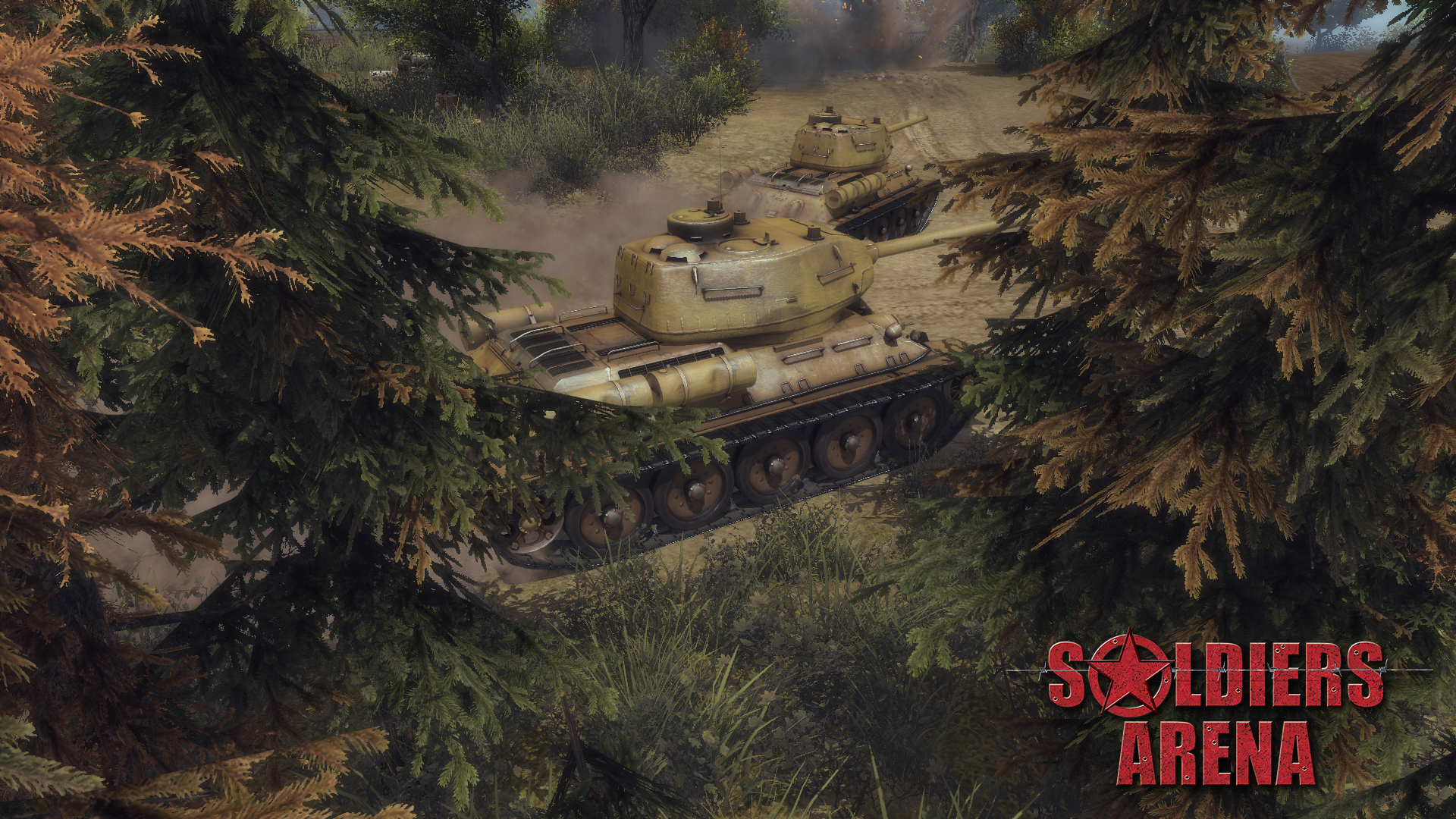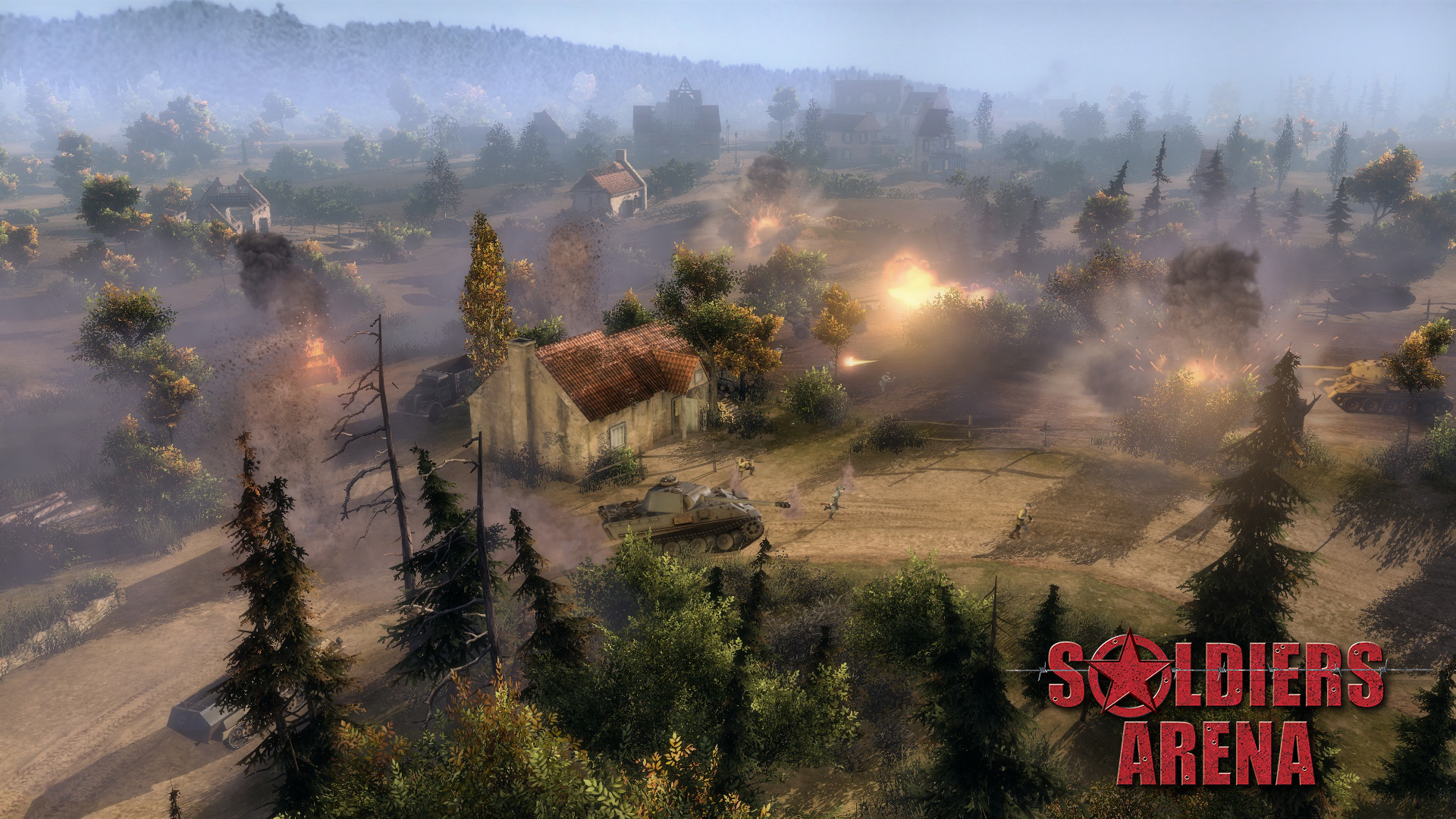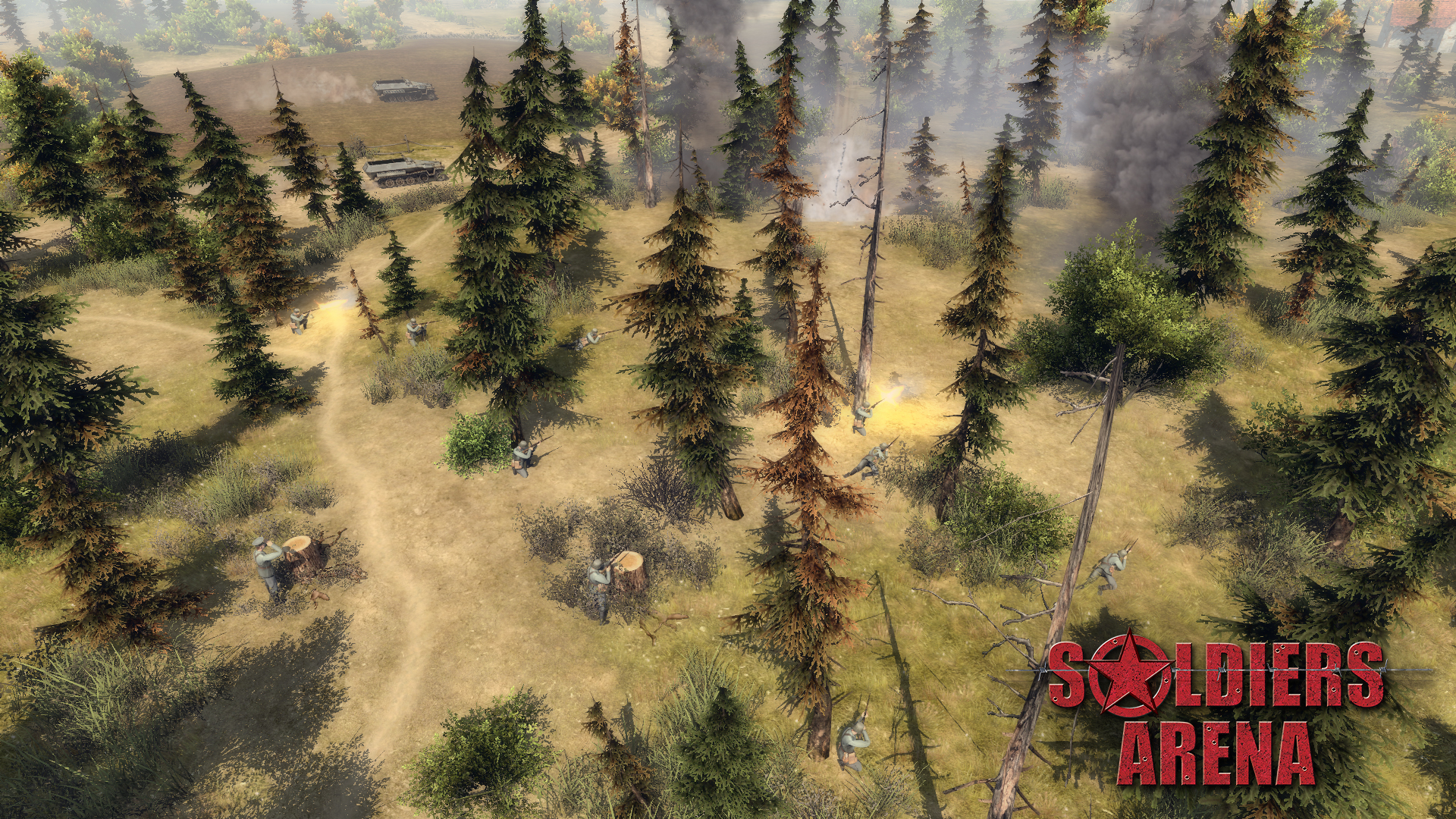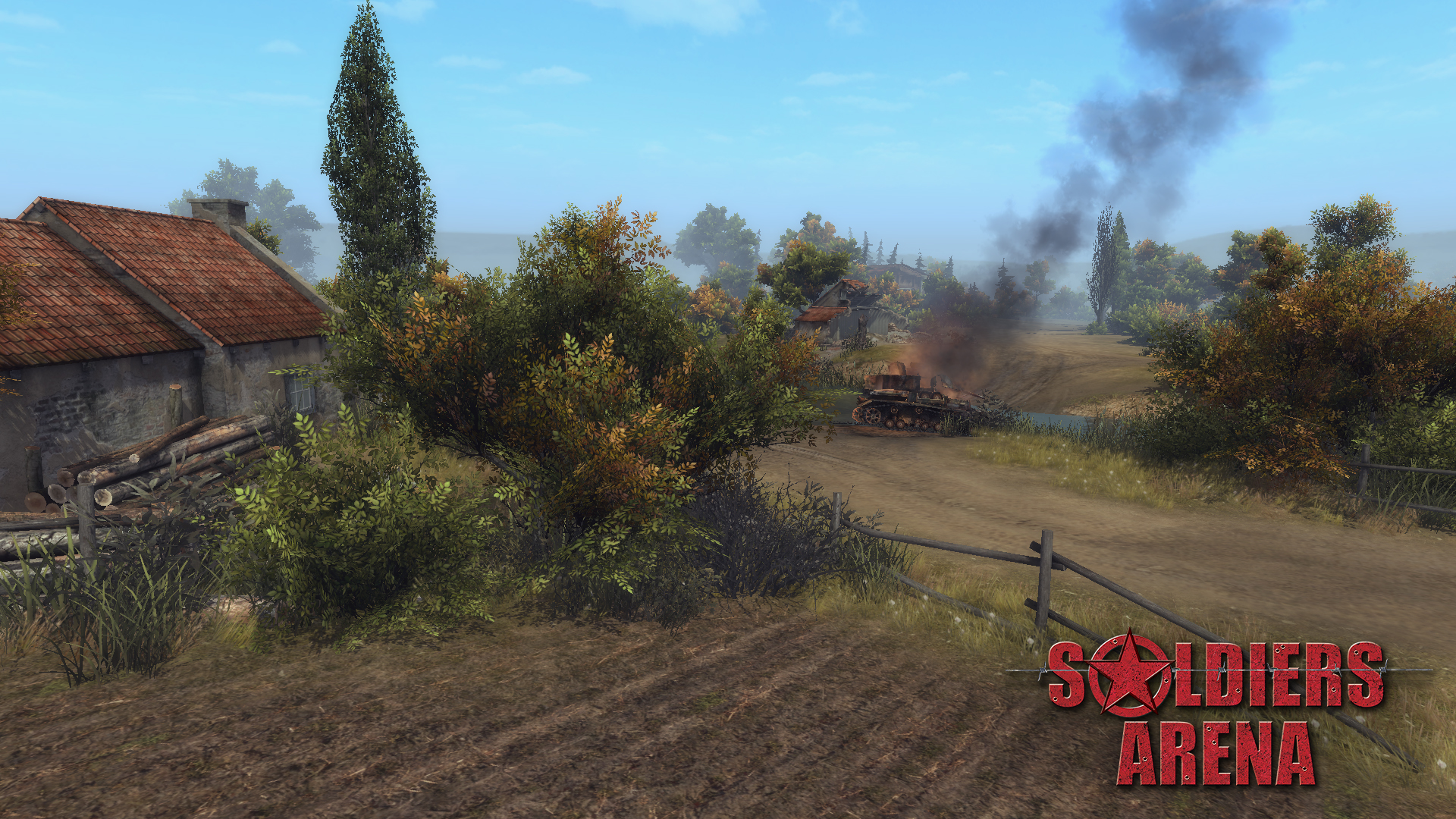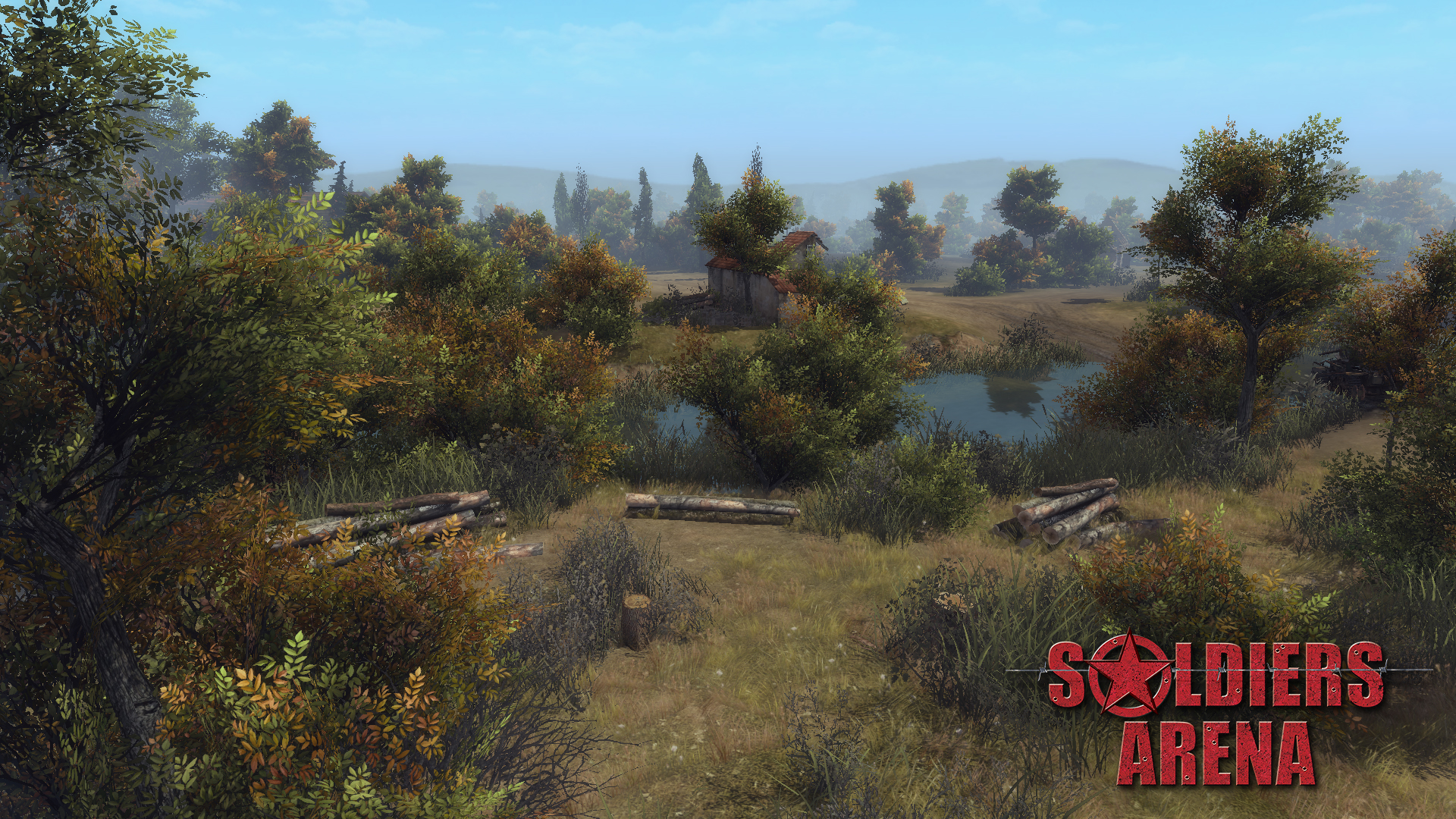Both new and already battle-proven multiplayer gamemodes to the original tactical gameplay are waiting for you. Interactive destructible environments and the ability to direct-control any combat unit. Steam support: matchmaking, workshop, steamcloud. Redesigned graphics, models and special effects. Conceptual new interface and convenient control, new battlefields and new opportunities.
Features:
- Revival of the “Men of War/Soldiers” game series. This multiplayer tactical RTS absorbed the best of the original series, favourite of players all over the world.
- Huge roster of units. Within a single game session, players will have access to a large number of unique units for every nation: tanks, vehicles, infantry and artillery of various types.
- The “Direct Control” mode. This mode provides the ability to play from the third person for any unit in the player’s army. The movement of the unit, firing the various guns, control of ammunition types, etc. all relying and directly controlled by player and thus the game conveys tactical action in it’s very essence.
- Destructible interactive environments. During the battle almost any object of the game can be destroyed or set on fire. Furthermore, all objects, including craters from explosions, may be used as cover.
- Atmosphere and realism. Even in large-scale game battles, it is necessary to take into account factors such as the supply of fuel and ammunition of each single unit. The precense of inventories for each unit limits the number and size of transported objects. Guns’ accuracy and penetration decreases with distance. Tired soldiers reduce the movement speed during long crossings. The influence of these and many other factors makes possible to reproduce the battles of World War II with a adequate degree of realism, most involving the player into the atmosphere of heated battles of the past.
- Modular realistic damage system. Any vehicle, regardless of its type, is composed of a set of modules that can be broken or destroyed. Types of ammunition, characteristics of guns, shooting distance, angle of armor, armor plate thickness and the threshold of material fatigue are taken into account, when calculating the piercing capability and damage caused to each of the component. Additionally, there are calculations of the probability of detonation of ammunition, engine fires, damage to wheels or tracks (which leads to immobilization of combat units). If a component is not destroyed, it can be repaired.
- Wide range of opportunities for infantry. Intelligence, combat, capture and repair of equipment, installation of anti-personnel and anti-tank obstacules of different types, construction of protective structures, health treatment, cover usage, ability to change through primary and secondary weapons, capture of buildings and territories.
- Great number of different types of weapons and ammunition. Pistols, submachine guns, machine guns, rifles and carbines, various types of grenades, dynamite, mines, knives and other items of equipment that are unique to each nation.
- Advanced Artificial Intelligence (Advanced AI). Infantry’s behaviour based on the feedback information from their own sensors (vision and acoustics), as well as allies’ signals. This allows the use of diversionary tactics, sending scouts into the enemy's rear, as well as to open the visibility with the help of special devices - observation towers, binoculars, telescopic tubes and sniper scopes. The morale of the infantry depends on the balance of forces on the battlefield - the soldiers may decide to advance or to withdraw from the fight.
- Conceptual new interface for convenient control.
- Enhanced game engine Gem2. Reworking of the game engine allows to provide a new level of graphics, the implementation of new and improvement already familiar to users game mechanics.
- OSX, Mac. Linux support.
- Full Steam support. Matchmaking, workshop, steamcloud, tradecards, achievments, steamstats, inventoryitems.
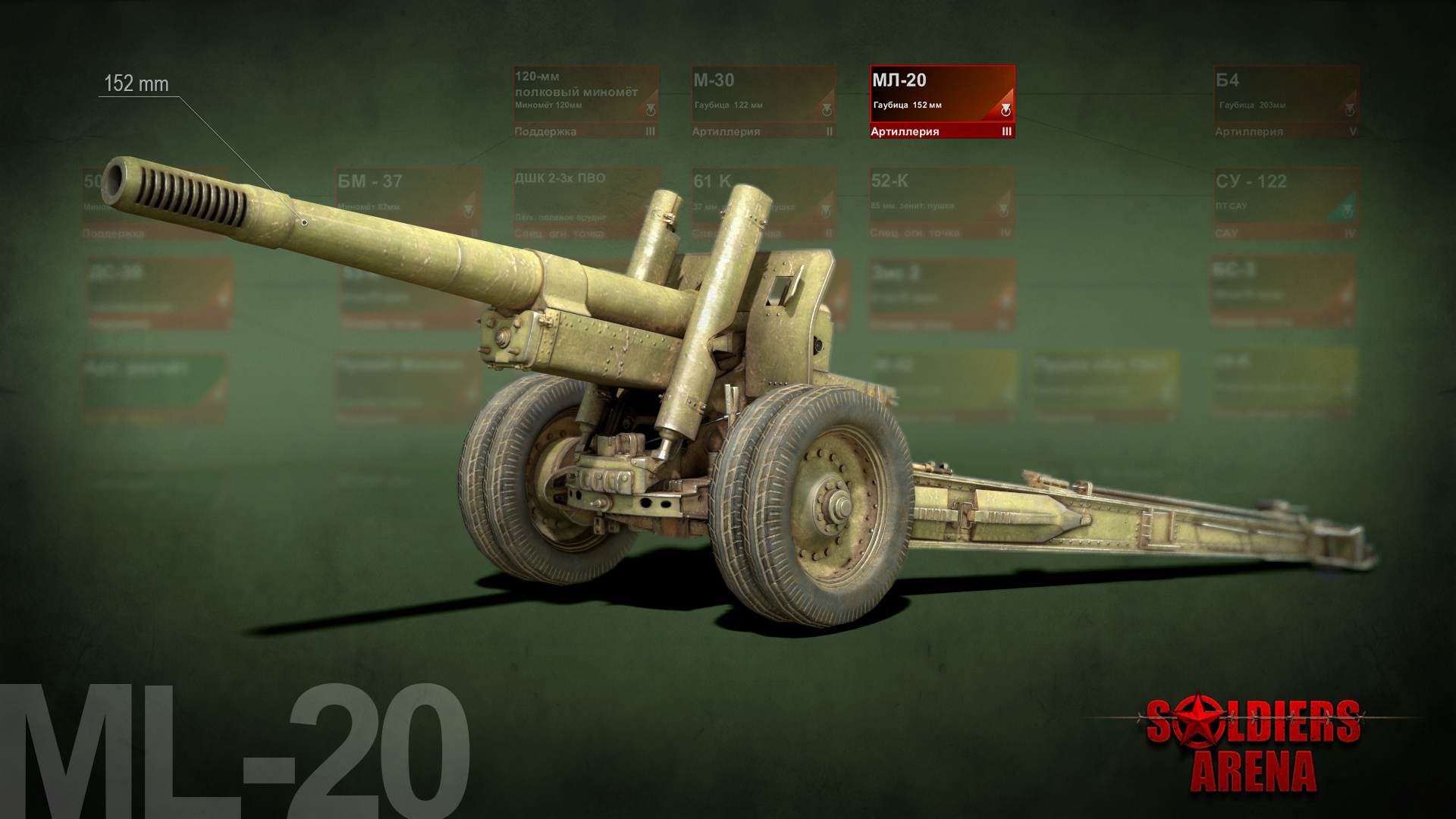 Link
Link
Hi, friends.
In today's diary we will talk about two new multiplayer maps: the Kursk fields and Bazerville. Here you can read about the features of each of them, the importance of gameplay diversity, the differences of maps in Soldiers: Arena and in other RTS games, and add to your collection a new render with Yemelya (ML-20) on it. Unlike its fairy-tale namesake , the Soviet howitzer doesnt ride on a Russian stove, but still manages to create some magic in the game even without the help of a magical pike, but with the help of its own 152-mm shells.
Disclaimer: On some maps there are buildings of the era of MoW-antiquity, due to the fact that not all permits for demolition and modernization have been obtained yet.
 Link
Link
We won't repeat ourselves and speak again about the main principles of creating maps for Soldiers: Arena. If you need to refresh your memory, here are the links to the diaries about Polesie and Village. In todays issue you can find the distinctive features of the maps in relation to each other and to other strategic games. Let's start from the end:
- Interactivity of environment. We always wanted the world to be as lively as possible and give the player a lot of opportunities to interact with it. In most strategic games, you can at best use the terrain as a platform to gather resources or shelter from the fire. In the games of the series it was always different, and in Soldiers: Arena the number of such interaction mechanics became even bigger than in any other GEM-game. You can dig up the whole map with trenches, barricade buildings, hide your artillery behind a camouflage net and hide infantry in already growing bushes, use hills and cavities to your advantage, use burnt wrecks of enemy tanks to hide your own tanks, demine minefield and have fun in general.
- Front line. To win, it is not necessary to destroy all enemy bases or units, and the struggle for territory is not limited to points of interest. Although the priorities or places of increased interest remain, in each session you can see some non-standard solutions. Someone manages to dig in the middle of the field and hold a position throughout the battle, and someone loses well-fortified buildings, discouraged by armored cars rush or artillery advance. The non-standard approach in Soldiers: Arena work well and you dont need to repeat the same actions each game. Build the fort capture the mine build the barracks upgrade the fort. Naaaah.
- Role component is reflected not only in the selection and use of units, but also in map design. Each kind of troops has a landscape more comfy to play on. Depending on which map you are playing on and which units, the priority points of attack or defense can and will differ greatly.
- New experience on each map. The above mechanics make it possible to significantly change the gameplay, top units and battalions, even with a simple rearrangement of buildings. But we are not limited to this, and we want each multiplayer map to have its own individual gameplay features. Maps that differ only in weather conditions, a season of the year, or a visual style of buildings, is not our option.
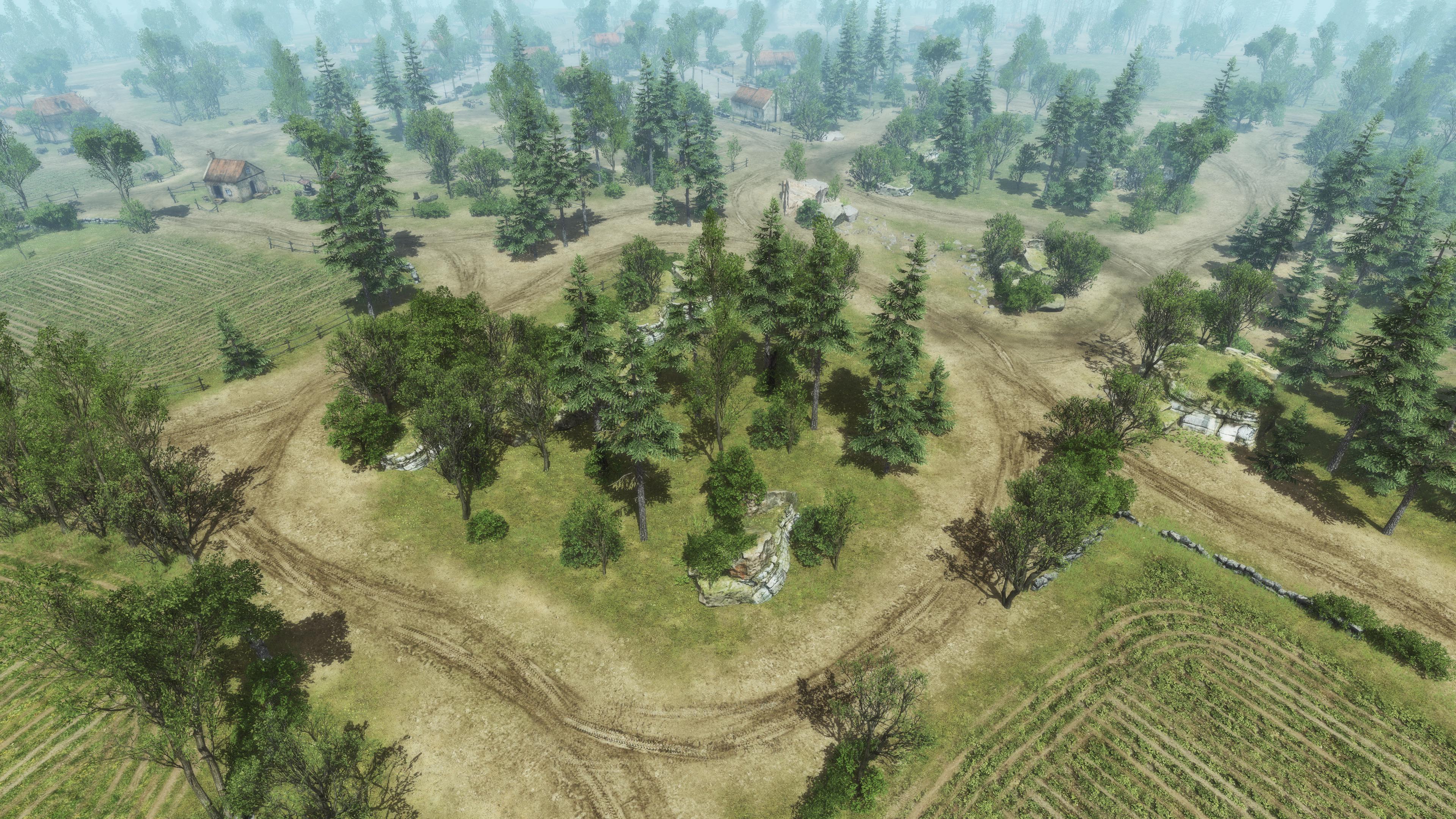 Link
Link
Let us turn to the differences of maps in relation to each other. The village, as the very first map created specifically for Soldiers: Arena, is one of the most balanced, and provides opportunities for the implementation of any specialty. There will always be a spot to hide howitzers, buildings for capturing by infantry, narrow streets for tank maneuvering, etc. At the same time, this is the map with a lot of dense buildings locations in it, and, for example, it is the most convenient for the Infantry Assault Battalion.
Polesie has a swamp in which it is impossible to dig trenches, and only certain islands of solid soil can be strengthened. Two hills with easily overlapped passages that will protect units from direct fire. And there is a mill on the hill, which gives a good overview, which is especially difficult to attack and convenient to defend.
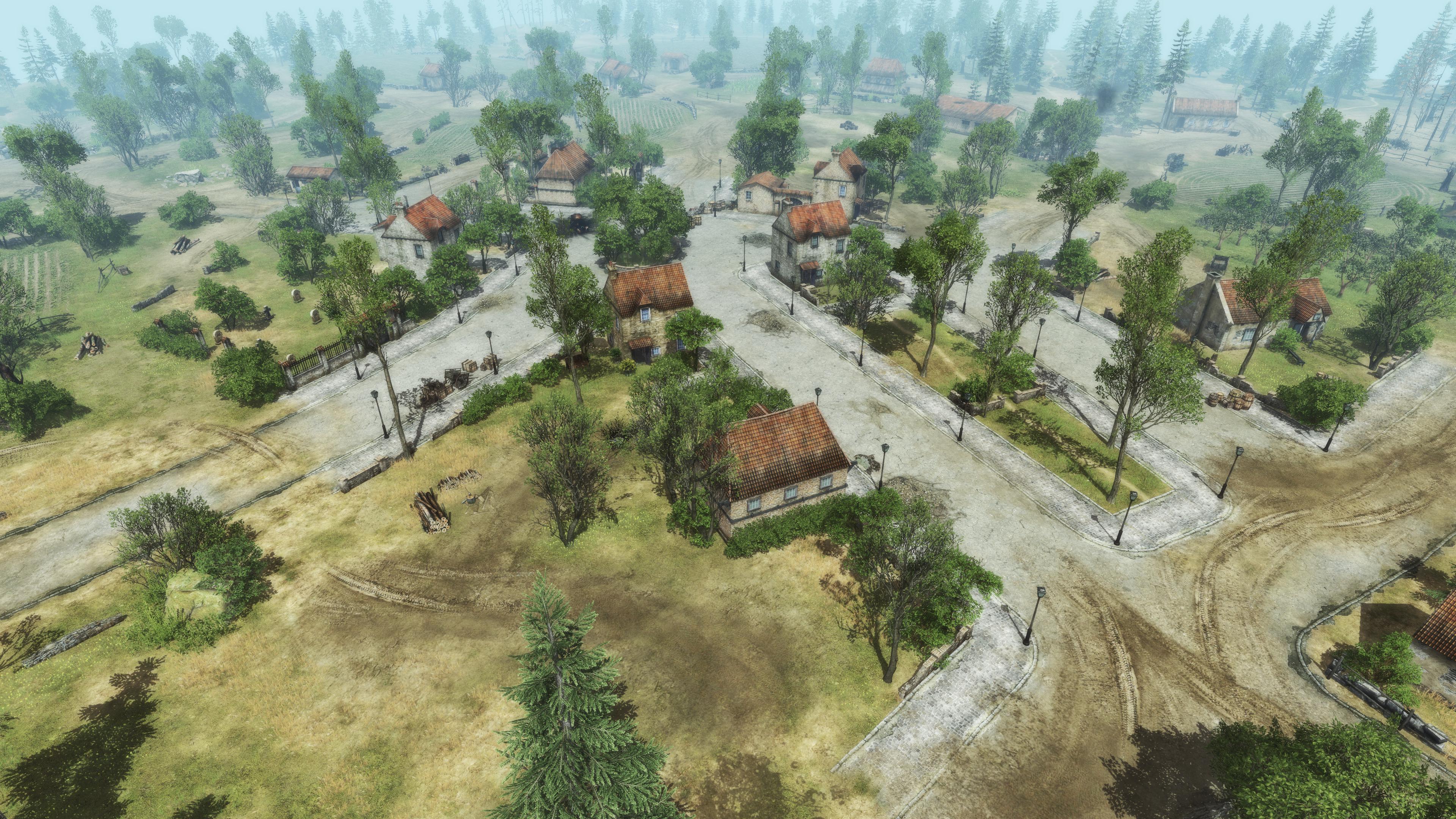 Link
Link
Last week we added a Bazerville map modified to version 3.0. It will be familiar and unrecognizable at the same time for most of the MoW fans. We had to seriously change the location of the buildings, make the ravines a little less deep, remove some buildings and add others so that the position of the sides in relation to the front line became balanced. Bazerville is most similar to the Village map, but is an even smoother version in terms of landscape and location of buildings. So you mustnt adapt to the landscape most of the time. Lonely buildings are scattered along the entire front line, as are small open and well-sweep spaces. It can be said that Bazerville is the most measured and homogeneous of maps at the moment.
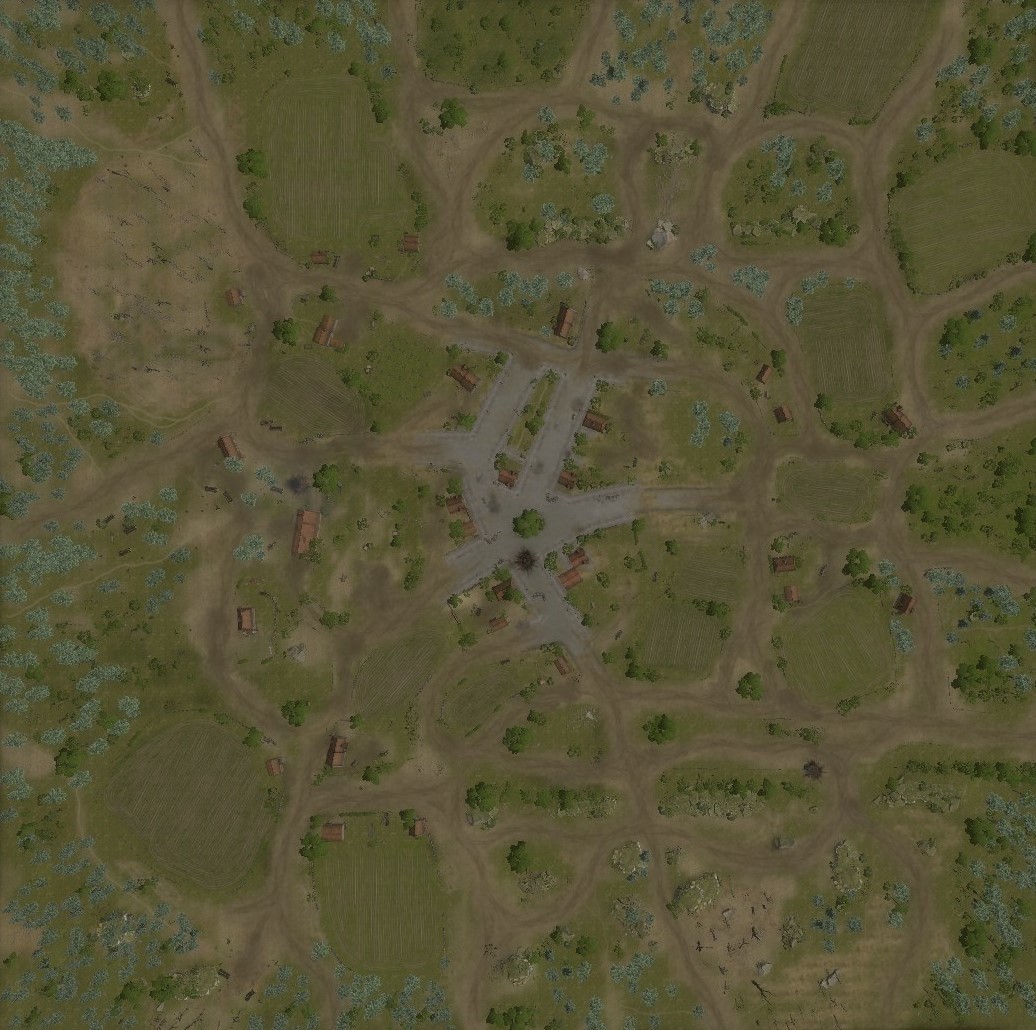 Link
Link
One of the features of the Kursk fields is a large amount of open space, which makes the station and a small group of buildings to the right even more interesting to hold. The rest of the map may seem like a dead zone for infantry. Large open spaces without elevation changes enable machine guns, tanks and cannons to shoot through half of the map without changing positions. The first tests on this one were really unusual. The infantry seemed too weak. Tankmen were afraid to go forward towards the fortified positions of AT-artillery. Mortars and howitzers died as soon as they become visible, and their main advantage in indirect shooting from behind cover was not evident.
 Link
Link
Some time passed and a new meta was formed. And then we finally convinced that the Arena formula works. Battalions, who initially seemed less interesting, opened from a new side. The speed advantage of the Motorized Rifle Battalion in relation to other infantry seemed previously insufficient or even insignificant. Due to the large number of buildings and uneven terrain on other maps, armored vehicles did not always excel. In open spaces, their advantage makes the difference, while the Assault Battalion, deprived of the opportunity to move by dashes from building to building, loses its light flare of imbalanceness. A full-length infantry attack often leads to losing, and a cautious game with snipers or strengthening positions leads to victory. Therefore, the Sapper battalion with its additional AT-hedgehogs, barricades and quick digging of trenches becomes more attractive. At the same time, the bias in the direction of howitzers decreased and AT-artillery became stronger due to the possibility of firing at half of the map, taking the place in the center. No buildings and trees cover the view anymore. You just put the battery and wait for the victim.
 Link
Link
Nonlinear balance, to which we so sought, is working, and at different levels. And this is a great reason for joy and a little pride. Each map differs not only visually, but also in the gameplay sense, and these differences are more obvious and deeper than in other parts of the series. Also we have a bit more maps before the Early Access than we initially planned. So, where we dont meet deadlines, we catch up with content, you know. Friends, write in the comments what maps you would like to see in the Arena and which mechanics of interaction with the outside world you lack. Wish you all the best!
Minimum Setup
- OS: Ubuntu 12.04
- Processor: 2 GHz Intel Dual CoreMemory: 4 GB RAM
- Memory: 4 GB RAM
- Graphics: 3D Hardware Accelerator Card Required - OpenGL 3.0 compatibleNetwork: Broadband Internet connection
- Storage: 5 GB available space
Recommended Setup
- OS: Ubuntu 15.04
- Processor: Intel Core i5-2.5GHzMemory: 8 GB RAM
- Graphics: NVIDIA GeForce GTX 560 or AMD Radeon HD 7750 with 1 GB VRAM or betterNetwork: Broadband Internet connection
- Storage: 5 GB available space
[ 6376 ]
[ 5865 ]
[ 751 ]
[ 2194 ]

